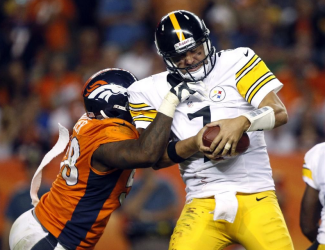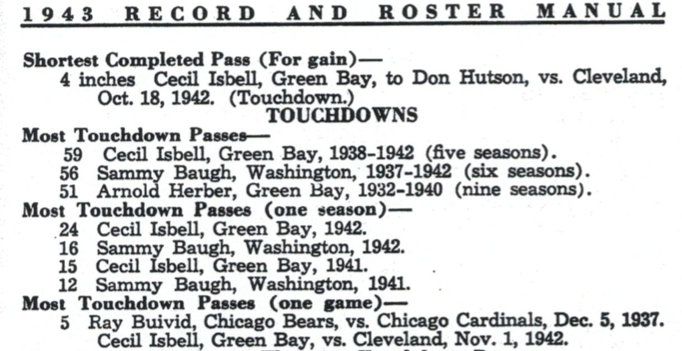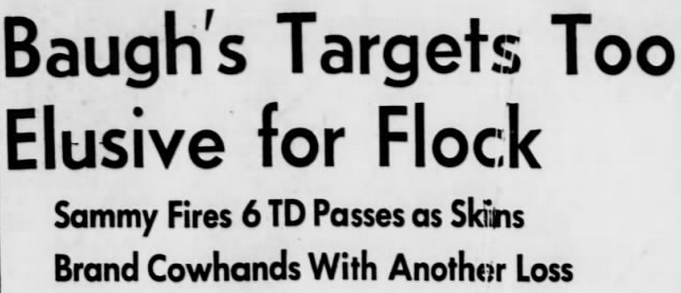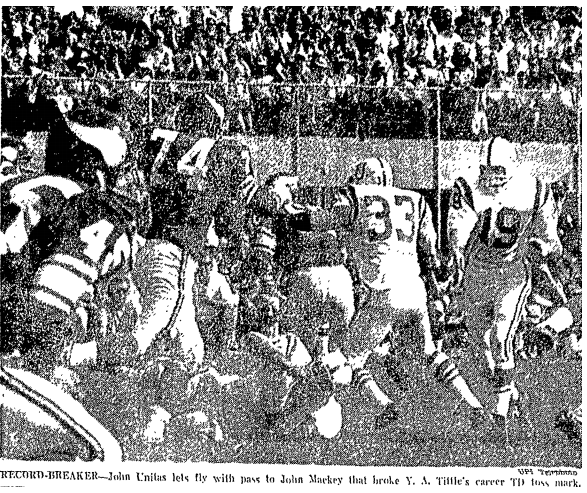With his next touchdown pass, the Lions’ Matt Stafford will consign yet another of Bobby Layne’s franchise records to the dustbin of history. They’re both tied at 118, but that’s not why I’ve raised the subject. I’ve raised the subject because Layne last took a snap for Detroit in 1958. That’s how lacking the club’s quarterbacking has been the past 56 years.
When you think of all the rule changes over the decades that have aided the offense, it’s somewhat miraculous any career passing record from that era — even a team record — is still on the books. After all, there are seven active QBs (the Falcons’ Matt Ryan, the Ravens’ Joe Flacco, the Cowboys’ Tony Romo, the Patriots’ Tom Brady, the Saints’ Drew Brees, the Giants’ Eli Manning and the Steelers’ Ben Roethlisberger) who are their franchise’s all-time leader in touchdown passes, and an eighth (the Broncos’ Peyton Manning) who is another franchise’s all -time leader (the Colts). Let’s face it, no record is more made to be broken than a passing record.
Surprisingly, though, three other clubs’ records for TD passes have been standing even longer than the Lions’, and three more predate ’78 (when the one-bump rule was instituted, holding was all but legalized and the game began turning into the passfest we have today). The details:
LONGEST-STANDING TEAM RECORDS FOR CAREER TD PASSES
[table width=”475px”]
Since,Held By\, Team,TD,Next
1950,Sid Luckman*\, Bears,137,Jay Cutler\,115
1952,Sammy Baugh*\, Redskins,187,Sonny Jurgensen\, 179
1955,Otto Graham*\, Browns,174,Brian Sipe\, 154
1958,Bobby Layne*\, Lions,118,Matt Stafford\, 118
1972,Roman Gabriel\, Rams,154,Jim Everett\, 142
1975,Len Dawson*\, Chiefs,237,Trent Green\, 118
1976,Joe Namath*\, Jets,170,Ken O’Brien\, 124
1978,Fran Tarkenton*\, Vikings,239,Tommy Kramer\, 159
1979,Ken Stabler\, Raiders,150,Daryle Lamonica\, 148
[/table]
*Hall of Famer
Note: Graham’s total includes the 86 touchdown passes he threw in the All-America Conference (1946-49) before the Browns joined the NFL.
As you can see, seven of these team records are held by Hall of Famers, but many of them didn’t set the bar very high by today’s standards. Layne’s mark (118) is by far the lowest. In fact, it’s barely more than the number of TDs passes Peyton Manning has tossed in 3½ seasons with the Broncos (111).
In the last few years, Stafford has broken Layne’s franchise records for attempts, completions and yards. Soon enough, all that will be left is Layne’s mark for interceptions (142 – which Stafford, at 79 and counting, also has a shot at). Of course, Bobby was the quarterback on two Lions championship teams (1952-53). Matt has a ways to go before he tops that.
Source: pro-football-reference.com






